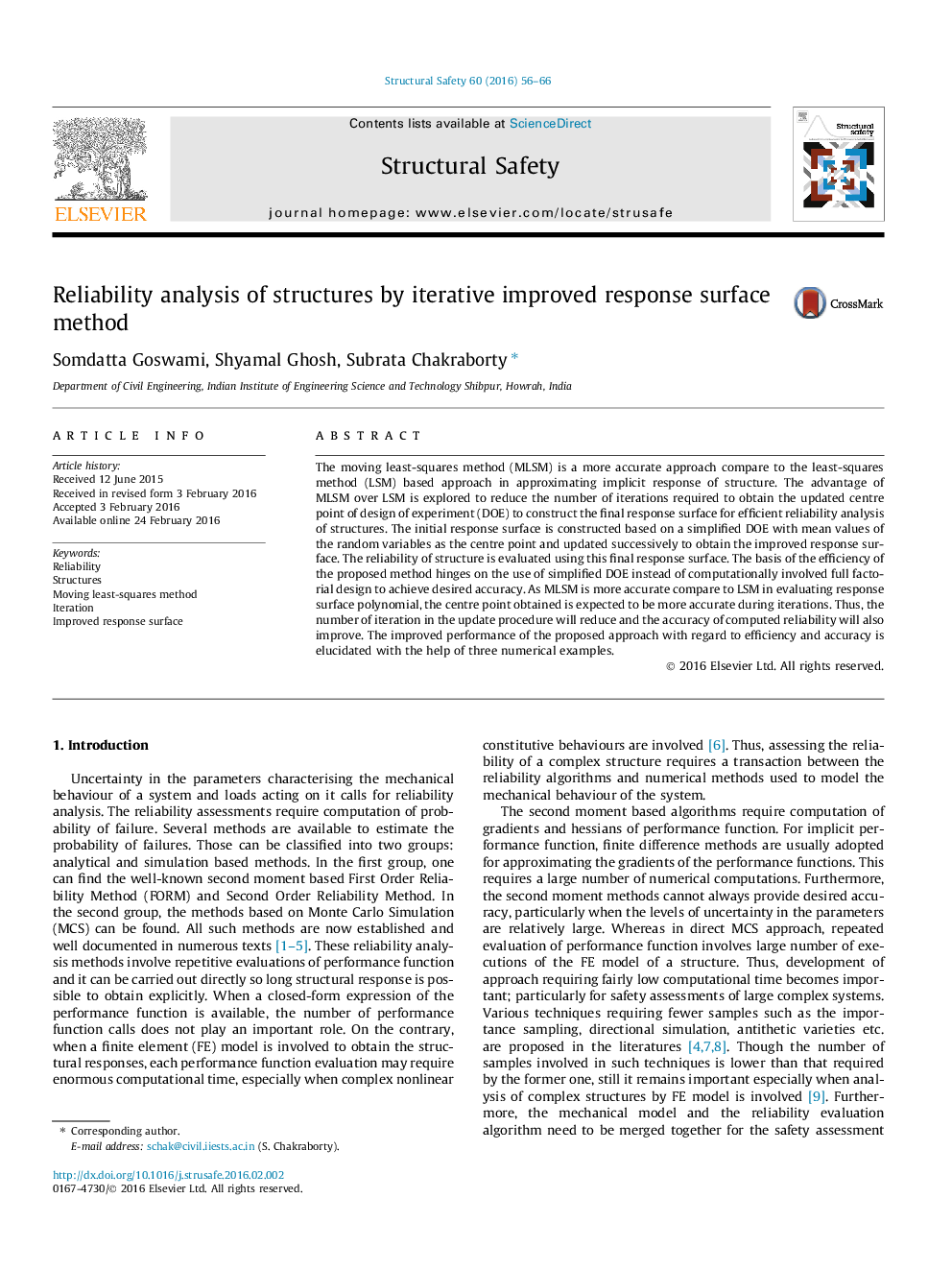| Article ID | Journal | Published Year | Pages | File Type |
|---|---|---|---|---|
| 307445 | Structural Safety | 2016 | 11 Pages |
•Efficient iterative response surface method of reliability analysis.•Obtain a converged centre point iteratively to construct the final response surface.•Moving least squares method for efficiency and improved accuracy.•Reliability estimate comparison by both the second moment method and simulation approaches.
The moving least-squares method (MLSM) is a more accurate approach compare to the least-squares method (LSM) based approach in approximating implicit response of structure. The advantage of MLSM over LSM is explored to reduce the number of iterations required to obtain the updated centre point of design of experiment (DOE) to construct the final response surface for efficient reliability analysis of structures. The initial response surface is constructed based on a simplified DOE with mean values of the random variables as the centre point and updated successively to obtain the improved response surface. The reliability of structure is evaluated using this final response surface. The basis of the efficiency of the proposed method hinges on the use of simplified DOE instead of computationally involved full factorial design to achieve desired accuracy. As MLSM is more accurate compare to LSM in evaluating response surface polynomial, the centre point obtained is expected to be more accurate during iterations. Thus, the number of iteration in the update procedure will reduce and the accuracy of computed reliability will also improve. The improved performance of the proposed approach with regard to efficiency and accuracy is elucidated with the help of three numerical examples.
